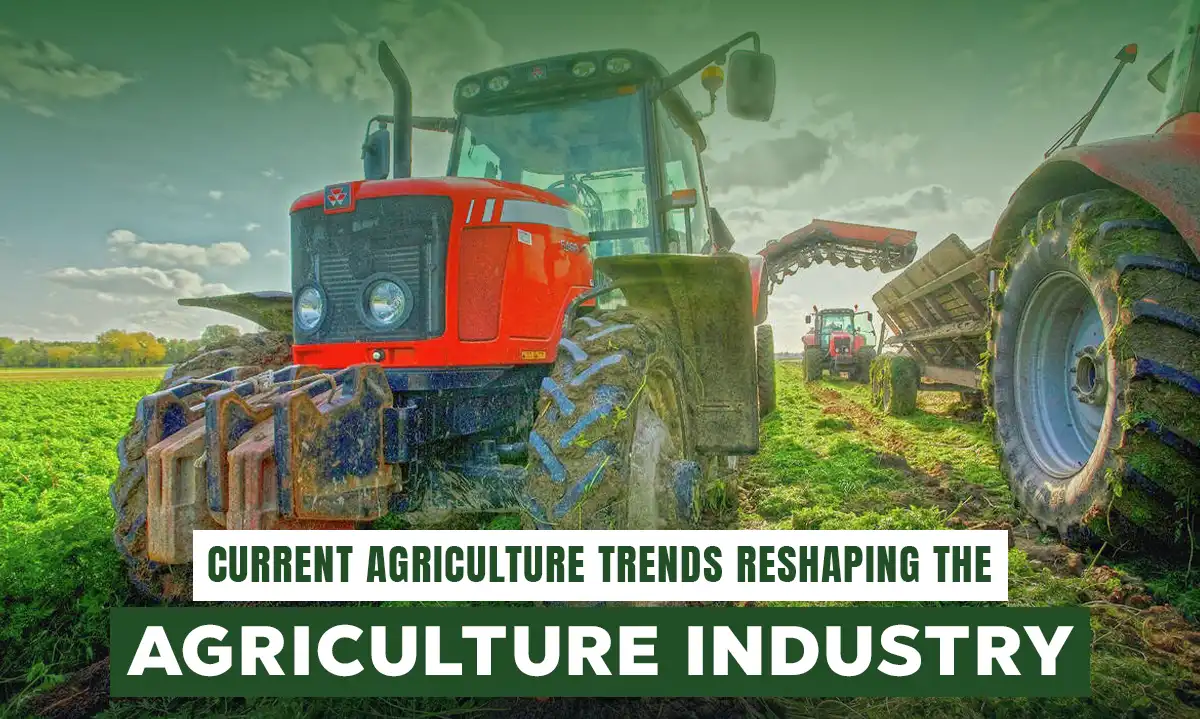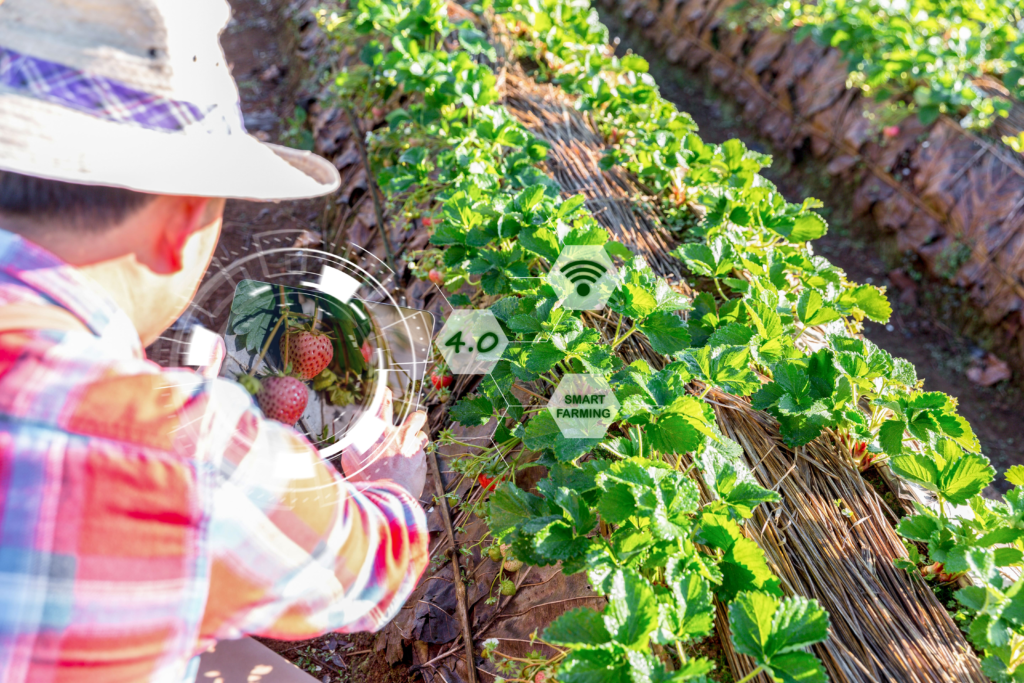
Farming has always been the backbone of rural America. As the agricultural sector continues to evolve, new farming trends are emerging that have the potential to reshape how farming is done across the nation. From advanced technologies to new sustainable practices, these trends are transforming the way farmers work, the crops they grow, and the way they interact with the environment. In this article, we’ll explore 10 key trends that are changing the landscape of rural agriculture.

1. Smart Farming: The Rise of Technology in Agriculture
Technology is playing an increasingly vital role in modern farming. Smart farming involves using sensors, GPS, and other technologies to monitor crops, soil health, and weather conditions. For instance, drones are being used to collect real-time data on crop health, enabling farmers to identify issues like pests or nutrient deficiencies early. This data-driven approach helps farmers make informed decisions that can improve yields and reduce costs.
Farmers are also adopting precision farming tools like automated tractors and harvesters, which help them manage large fields more efficiently. These advancements make farming smarter, more sustainable, and cost-effective.
2. Sustainable and Regenerative Farming Practices
Sustainability is no longer just a buzzword; it’s a critical part of modern farming. In rural America, farmers are turning to regenerative agriculture techniques to improve soil health, increase biodiversity, and reduce carbon footprints. Regenerative farming practices include crop rotation, cover cropping, reduced tillage, and agroforestry. These methods not only help preserve the environment but also improve long-term yields and make farms more resilient to extreme weather events.
Farmers are increasingly looking to build healthier ecosystems on their farms, focusing on the long-term health of the land rather than short-term profits. This shift toward sustainability is a crucial part of preserving rural America’s agricultural heritage.
3. Vertical Farming: Maximizing Space and Reducing Environmental Impact
Vertical farming is rapidly gaining traction, especially in areas where land is limited or expensive. By growing crops in stacked layers, farmers can produce more food on less land. This farming method also reduces water usage and minimizes the carbon footprint by using controlled indoor environments, such as greenhouses, to grow crops year-round.
In rural America, vertical farming is being integrated into smaller operations, particularly in regions where traditional farming practices face challenges like droughts or land degradation. With advancements in LED lighting, climate control, and hydroponics, vertical farming is poised to change how we think about growing food in rural communities.
4. Farm-to-Table Movement and Local Food Systems
The demand for locally grown, fresh produce is increasing across the United States. This is a key driver behind the growth of the farm-to-table movement. Consumers are becoming more aware of the environmental impact of their food choices and are increasingly seeking food that is grown sustainably and locally. Farmers are responding by creating direct-to-consumer models, such as farmers’ markets, community-supported agriculture (CSA) programs, and farm stands.
These efforts not only provide consumers with fresh, healthy food but also allow farmers to earn higher profits by cutting out middlemen. The farm-to-table movement is bringing urban and rural communities closer together, creating a more sustainable and resilient food system.
5. Agro-tourism: A New Revenue Stream for Farmers
Agro-tourism is an emerging trend that allows farmers to diversify their income by offering farm tours, workshops, and other educational experiences to visitors. Rural areas across the United States are embracing agro-tourism, with farms offering visitors the chance to pick their own produce, learn about sustainable farming practices, or stay on a working farm for a more immersive experience.
This trend not only helps farmers generate additional income but also raises awareness about the importance of agriculture in rural communities. As more people seek authentic, local experiences, agro-tourism is likely to become an even more important part of rural America’s economy.

6. Use of Drones in Farming
Drones are becoming a valuable tool for farmers in rural America, helping them monitor crops, assess soil health, and even apply pesticides and fertilizers more precisely. Drones equipped with advanced sensors can capture high-resolution images that reveal important data, such as crop stress, water levels, and pest infestations. This allows farmers to respond quickly to problems and minimize the use of chemicals, resulting in more efficient and eco-friendly farming.
The use of drones also improves safety on farms by reducing the need for farmers to physically enter hazardous areas. As drone technology becomes more affordable and accessible, its use in farming is expected to grow significantly.
7. Urban Farming and Rural-Urban Collaboration
While rural America has always been known for its vast farmlands, urban farming is emerging as a complementary trend. Cities are increasingly looking to localize food production to reduce transportation costs and carbon footprints. Urban farms are sprouting up in abandoned lots, rooftops, and even basements of city buildings.
Rural farmers are beginning to collaborate with urban farmers to create more efficient and sustainable food systems. These partnerships help create local food networks that benefit both urban and rural communities. By linking rural and urban agriculture, farmers can expand their markets and meet the growing demand for fresh, local food.
8. Automation in Farming: The Future of Labor
Labor shortages in rural America have prompted farmers to turn to automation. From robotic harvesters to automated irrigation systems, farming automation is helping to fill the gap in labor availability. These technologies enable farmers to increase efficiency, reduce labor costs, and ensure more consistent results.
Automated machinery can perform tasks like planting, weeding, and harvesting, which were once labor-intensive. As the technology continues to improve and become more affordable, automation will become a crucial part of the future of farming in rural America.
9. Climate-Smart Agriculture
As climate change continues to pose challenges to farmers, many in rural America are adopting climate-smart agriculture practices to mitigate its effects. These practices focus on building resilience to extreme weather events such as droughts, floods, and heatwaves. Techniques like soil conservation, water management, and drought-resistant crops are helping farmers adapt to changing environmental conditions.
By implementing climate-smart practices, farmers can not only protect their crops but also contribute to the fight against climate change. This trend is becoming increasingly important as rural communities face more unpredictable weather patterns.
10. Alternative Proteins and Sustainable Food Systems
With the growing global population and increased awareness of environmental sustainability, alternative proteins are becoming a major trend in the farming industry. These proteins, such as plant-based meats and lab-grown meat, offer a more sustainable way to meet the world’s protein needs without relying on traditional livestock farming.
In rural America, some farmers are exploring the production of alternative proteins as a way to diversify their income. By investing in plant-based agriculture or partnering with companies that produce lab-grown meat, rural farmers can tap into new markets and contribute to a more sustainable food system.
Conclusion
Farming in rural America is undergoing a transformation, with innovative trends reshaping the way agriculture is practiced. From embracing technology to adopting sustainable practices, farmers are finding new ways to improve efficiency, boost profits, and protect the environment. These trends not only benefit farmers but also contribute to building a more resilient and sustainable food system for the future. As these trends continue to evolve, the future of rural agriculture looks promising, with new opportunities for growth and innovation.
Also Read:- 10 High-Paying Side Hustles for US Residents in 2025





